Members and Friends,
We hope this finds you staying healthy and looking forward to another great summer at the Country Club of Barre. Your board of directors has been hard at work planning for the season and putting us in the best position going forward. We wanted to give you an update as to happenings at the club and our changes necessitated by COVID-19.
The board is pleased to announce that we have hired a new head golf professional, Peter Finnegan. Peter brings the club years of experience as a PGA professional and a keen focus on providing top-notch customer service. He is a tremendous asset for the club, and we are very happy to have him on board. Peter can be reached at (843) 333-6905 or pfinnpga@hotmail.com.
In addition, last fall the club entered into an agreement to replace our existing fleet of 40 carts with 50 2018 Club Cars. The newer, larger fleet will give us much needed flexibility, reduce maintenance and operation costs, and prevent the need from renting supplemental carts for events. We anticipate they will be delivered in the month of April.
As you are aware, the situation we all face regarding COVID-19 is ever-changing. Following are the plans the board has developed based on the information that we have today. We will be meeting for our monthly board meeting on 4/20/20 and hope to have more concrete information to share at that point.
∙ The Annual work bee has been cancelled – if you would like to volunteer to help us get ready for the season while getting some exercise and practicing social distancing, please contact Bill Evans (802-522-8353), Mitch Evans (802-477-3755) or Eric Lajeunesse (802-522-7141).
∙ All facilities (golf course, restaurant and clubhouse) are closed until at least April 15 in accordance with Governor’s Stay Home, Stay Safe order.
∙ Fairways & Greens is planning to offer curbside pick-up once we open for the season. Menus will be located on the 8th and 16th tees allowing players to call ahead. In-person orders will not be accepted until further notice.
Our season isn’t far away, and we are asking that every member please pay your dues as soon as you can. We understand the idea of spending large sums of money right now is difficult and we will gladly work to set up a payment plan that works for you. Peter has even offered a generous 20% discount on all pro shop purchases from opening day through July 31, 2020 for new members who mention this email when they join!
We are diligently planning for how to open the golf course and facilities as soon as it is safe for us all to do so. With that said, we ask that anyone who is sick or feels under the weather please refrain from visiting until you are well.
This is your club and any support is very much appreciated. Thank you all!
– Country Club of Barre Board of Directors


